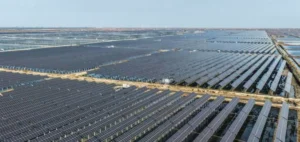Thanks to renewable energies and the rise of electric vehicles, the carbon intensity of global energy production should improve this year, after a sharp deterioration in 2021 linked to the post-Covid recovery, according to the IEA, which also notes the effect of the economic slowdown, particularly in Europe.
CO2 emissions from coal, oil and gas combustion are expected to increase in 2022 by just under 1% from 2021, to 33.8 billion tons.
However, this volume does not include all the emissions from the energy sector, which the IEA usually reports on and which also include the impact of CO2 flaring, non-renewable waste and the sector’s industrial processes. This figure for 2022 is not yet known.
Regarding emissions from fossil fuels per se, the increase is driven by electricity demand and aviation, according to these experts. But this balance sheet could have been worse, as the energy crisis fueled by the war in Ukraine has turned many countries away from gas and toward coal, which is much more polluting.
In the end, the deployment of new renewable energies will have prevented a sharper rebound at the global level.
“This means that CO2 emissions are growing much slower this year than some had feared, and that government measures are leading to real structural changes in the energy sector,” says IEA Director Fatih Birol, who anticipates “an acceleration of these changes thanks to the plans for decarbonized energy” announced in recent months in the European Union, the United States, and also in China and India.
The year 2022 should see a record annual increase of more than 700 terawatt-hours (TWh) of renewable electricity production (mainly photovoltaic and wind power).
Despite the difficulties associated with droughts, hydroelectricity accounts for one fifth of this increase.
However, this progress should not obscure the boom in coal-fired electricity, whose emissions are expected to grow by 2% in 2022, primarily in Asia. In the EU, CO2 emissions are expected to decline, despite some return of coal, which is considered temporary as several renewable projects are in the pipeline for 2023. As for China, the world’s largest emitter, they should remain more or less the same as last year. Finally, of the three fossil fuels, oil is enjoying the strongest growth this year, with the end of travel restrictions and the return of travel habits, notes the IEA.





















